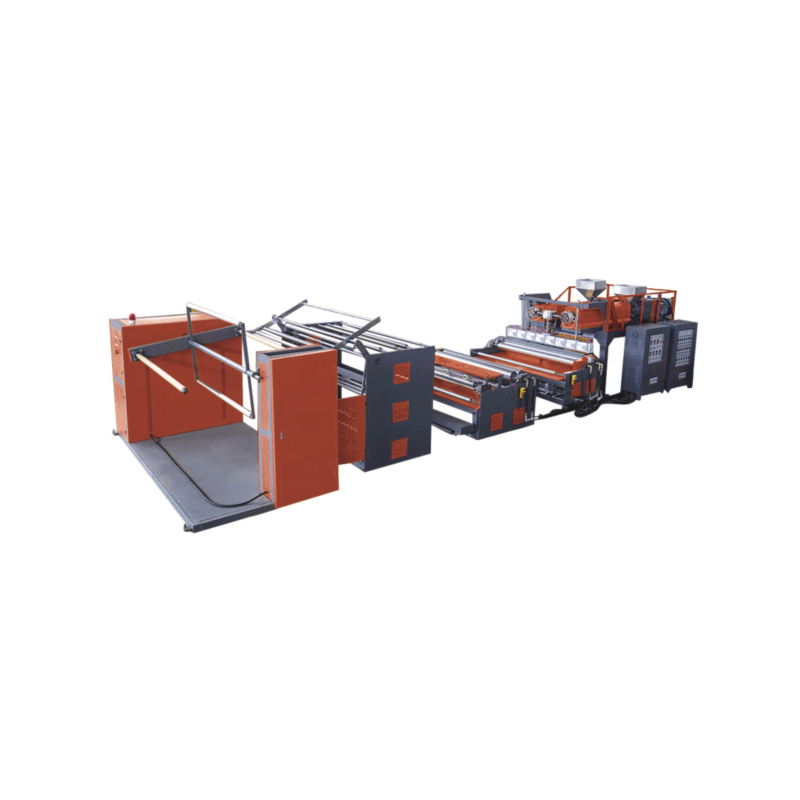Single-Layer Bubble Wrap Film Machines Protective Packaging with Efficiency and Quality
 By Admin
By Admin
Protective packaging is a critical component across various industries, from electronics to fragile consumer goods and e-commerce logistics. Among the array of cushioning materials available, bubble wrap remains one of the popular solutions, valued for its lightweight, shock-absorbing qualities. Central to bubble wrap production is the Single-Layer Bubble Wrap Film Machine, a specialized extrusion system designed to produce air-cushioned films with precision and reliability.
1. Streamlined Single-Layer Extrusion Technology
Unlike multi-layer co-extrusion machines used for complex films, single-layer bubble wrap film machines focus on extruding a single polymer layer, typically low-density polyethylene (LDPE). This streamlined approach simplifies the extrusion process, reducing mechanical complexity while delivering consistent bubble formation.
The simplicity of single-layer extrusion results in lower operational costs, easier maintenance, and faster start-up times, making these machines attractive for manufacturers focusing on cost-effective cushioning materials without sacrificing quality.
2. High Precision Bubble Formation
A hallmark of these machines is their advanced bubble mold design which creates uniform, consistently sized bubbles critical to effective cushioning performance. The molds, typically made from precision-machined steel or aluminum, feature multiple cavities that shape the bubbles as the molten film passes over them.
Maintaining the correct air pressure and temperature during bubble inflation is essential for bubble integrity and durability. Single-layer machines employ precise air injection and vacuum systems to ensure each bubble is properly inflated and sealed, preventing premature deflation or rupture.
3. Consistent Film Thickness and Gauge Control
Uniform film thickness is vital to ensure bubble wrap performs consistently across packaging applications. Single-layer bubble wrap machines use automatic gauge control systems equipped with sensors that continuously monitor film thickness and adjust extrusion parameters accordingly.

This results in material waste, uniform product quality, and balance between cushioning effect and material usage — all of which are crucial in competitive manufacturing environments.
4. Efficient High-Speed Production
Single-layer bubble wrap film machines are engineered for high throughput, with output capacities ranging from 100 to 350 kg/hour depending on model and bubble size. Efficient screw and die designs allow for stable melt flow even at high extrusion speeds, enabling manufacturers to meet large-volume orders without sacrificing product quality.
The use of servo-driven motors and precision drive systems enhances speed control and repeatability, supporting consistent production runs and reducing downtime between batches.
5. Versatile Bubble Sizes and Patterns
Customer needs vary widely in terms of bubble dimensions and film properties. Single-layer bubble wrap machines offer flexible mold configurations that can produce bubbles ranging from small (6mm diameter) for delicate electronics to large (25mm diameter) for heavy-duty industrial packaging.
Some advanced machines even support custom bubble shapes and patterns, allowing brands to differentiate their packaging or optimize cushioning for specific products. This versatility enables manufacturers to cater to diverse market segments from fragile glassware to automotive components.
6. Energy-Saving Features and Automation
Modern single-layer bubble wrap film machines integrate energy-efficient components such as variable frequency drives (VFDs), insulated heating zones, and optimized screw designs that reduce power consumption. These features help manufacturers lower operating costs and comply with sustainability goals.
Automation technologies including programmable logic controllers (PLCs), touchscreen interfaces, and real-time process monitoring allow operators to quickly adjust parameters like melt temperature, extrusion speed, and bubble inflation pressure. Automated alarms and fault detection improve production reliability and reduce waste.
7. Compatibility with Recycled Materials
As sustainability becomes a priority, single-layer bubble wrap machines have evolved to handle post-consumer recycled (PCR) resins without compromising bubble quality. The extrusion system and screw geometry are optimized to process recycled LDPE grades, supporting circular economy initiatives while maintaining film strength and clarity.




